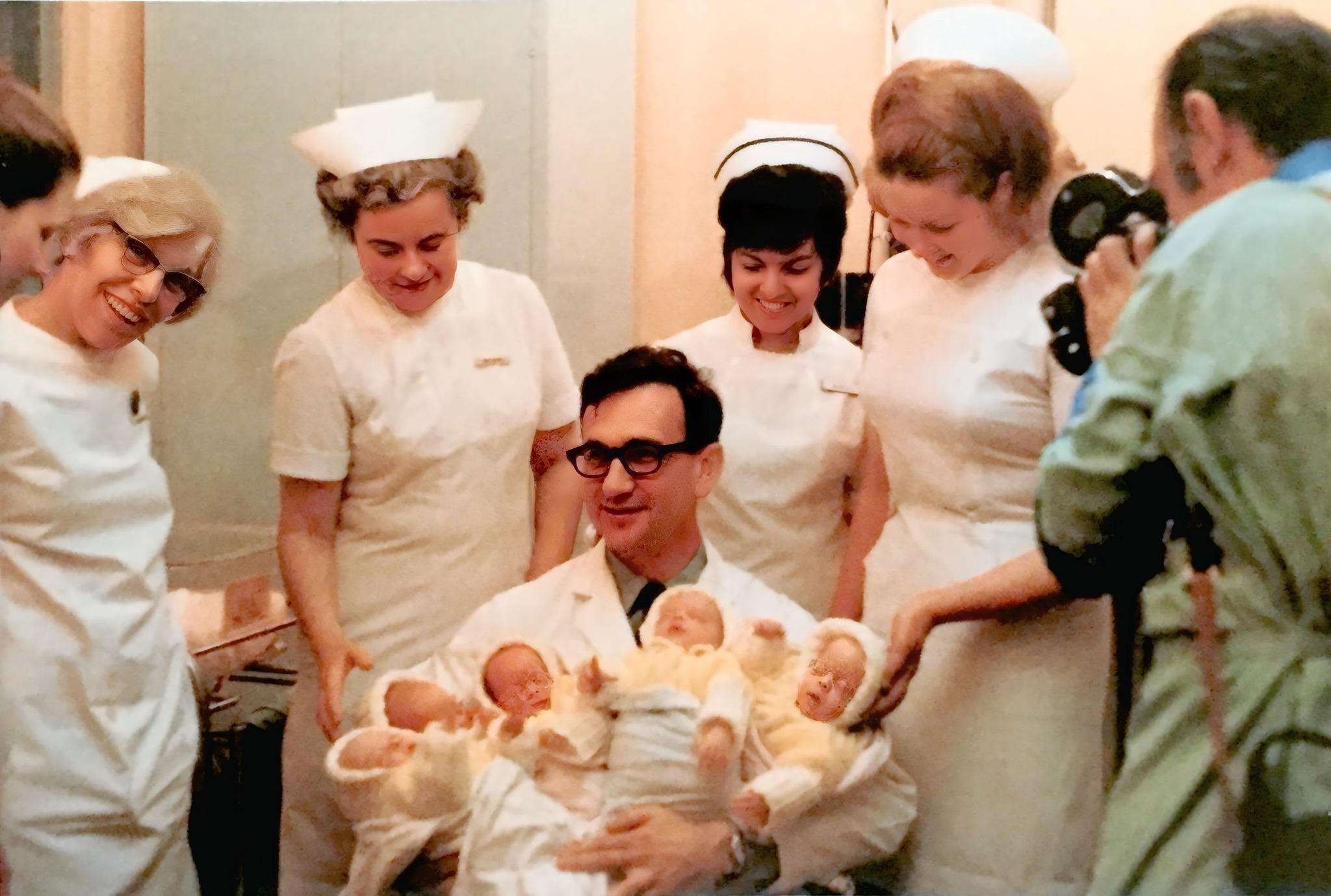On February 24, 1970, a remarkable chapter of American medical history unfolded inside Columbia-Presbyterian Medical Center in New York City. That morning, Mary Ann and Andrew Kienast welcomed five babies—Sara, Amy, Ted, Gordon, and Abby—into the world. The Kienast quintuplets instantly became a national sensation, representing only the second set of quintuplets in U.S. history known to survive beyond infancy. Their birth, against long odds and at the height of public fascination with medical breakthroughs, symbolized a turning point in neonatal care.
High-order multiple births were exceedingly rare at the time. In 1970, fertility drugs were in their infancy and advanced monitoring of high-risk pregnancies was still developing. For months, the Kienasts’ medical team at Columbia worked quietly but intensely, coordinating obstetric, neonatal, and nursing staff to prepare for every possible scenario. Specialized incubators were readied. Feeding schedules were mapped out. Anesthetic and surgical contingencies were rehearsed repeatedly. This level of organization was virtually unheard of then, but it would become a blueprint for future high-risk births.
When labor began, the delivery suite turned into a carefully choreographed operation. Separate teams stood by for each baby, equipped with their own neonatal resuscitation equipment and transport cribs. As each newborn arrived, they were whisked to their assigned team for immediate assessment, warming, and stabilization. Weighing only a few pounds each, the quintuplets required continuous monitoring of heart rate, oxygen saturation, and temperature in those first fragile hours.
Outside the hospital, news crews, photographers, and curious onlookers swarmed. The story of “America’s second surviving quintuplets” quickly captured headlines nationwide. Newspapers published daily updates, and the public watched with a mixture of awe and anxiety as the Kienast babies grew stronger. Their survival reflected not only extraordinary medical teamwork but also the growing capacity of hospitals to manage complex births that once seemed impossible.
The Kienasts themselves became minor celebrities. Offers for television appearances, magazine covers, and commercial sponsorships poured in. But behind the scenes, the parents faced the daunting task of caring for five infants at once, coordinating feedings, diaper changes, and medical appointments. Support from extended family, community groups, and even strangers played a crucial role during those early months.
Looking back, the 1970 Kienast quintuplets birth holds more than historical novelty. It marked a moment when modern obstetrics and neonatology proved their ability to save multiple premature lives simultaneously. Many of the protocols pioneered during that time—team-based delivery, individualized neonatal care plans, and rigorous prenatal monitoring—have since become standard practice in high-risk maternity wards around the country.
More than fifty years later, the Kienast quintuplets’ arrival at Columbia stands as a testament to medical progress, careful planning, and human resilience. Their story reminds us how far neonatal medicine has come—and how one family’s extraordinary experience helped reshape the future of care for high-risk pregnancies in the United States.
